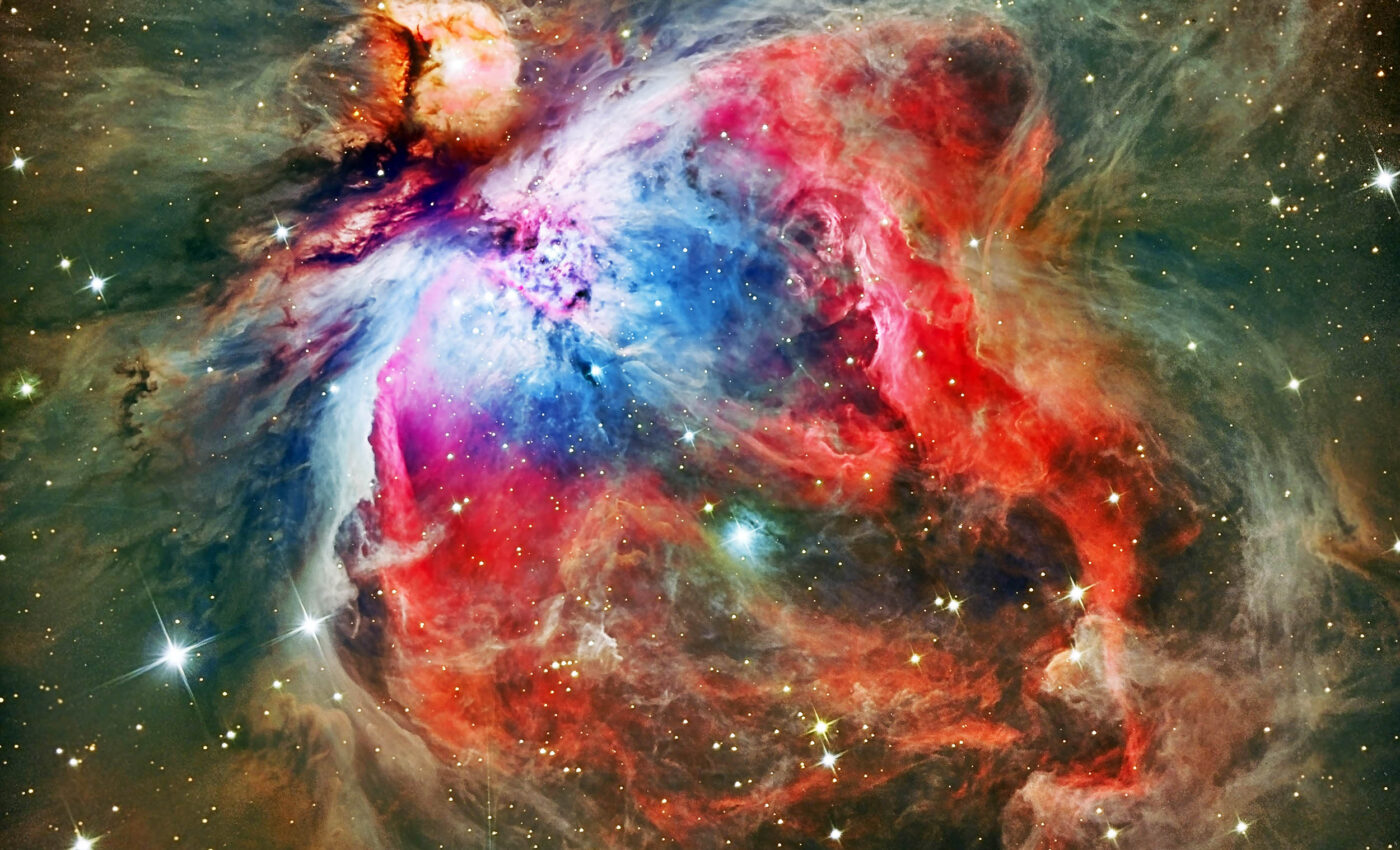
Massive stars shape planetary systems like ours with ultraviolet radiation
In the quest to unravel the origins of planetary systems like our own Solar System, a collaborative research effort has focused on massive stars to solve this cosmic puzzle.
Utilizing the unparalleled capabilities of the James Webb Space Telescope (JWST), the team embarked on an exploratory journey into the Orion Nebula, a cradle of star formation.
Their focus was a protoplanetary disc known as d203-506, through which they aimed to understand the critical influence of massive stars on the nascent stages of planetary systems.
Pivotal role of massive stars in our universe
Dr. Olivier Berné of the National Centre for Scientific Research (CNRS) in Toulouse, who spearheaded the study, and his colleagues have made a very important discovery.
Their research, detailed in the paper ‘A far-ultraviolet-driven photoevaporation flow observed in a protoplanetary disk’ published in Science, reveals how these colossal stars, both in mass and luminosity, dictate the fate of emerging planetary systems.
Massive stars, possessing tenfold the mass of our Sun and outshining it by 100,000 times, bathe nearby planetary formations in intense ultraviolet radiation.
This radiation plays a pivotal role — it can either foster the birth of planets or hinder their formation by dispersing the essential matter needed for their development.
In the case of the Orion Nebula’s planetary system d203-506, the team found that the overwhelming radiation from nearby massive stars prevents the formation of Jupiter-like planets.
Methodology: The power of combined observations
This comprehensive study was made possible through the collective expertise of the team, spanning instrumentation, data analysis, and modeling.
By integrating data from JWST with observations from the Atacama Large Millimeter Array (ALMA), the researchers were able to pinpoint the physical conditions within the gas of the protoplanetary disk.
Their findings suggest that the disk is losing mass at a rate that would preclude the formation of a giant planet within its confines.
Dr. Yoko Okada, a member of the team from the University of Cologne’s Institute of Astrophysics, reflects on the significance of their findings.
“It is great that so many contributions from the team over the years, including the planning of the observations and the evaluation the data, are bearing fruit in the form of these results that represent a significant step forward in understanding the formation of planetary systems,” Okada said.
More about the Orion Nebula and massive stars
As mentioned and pictured above, the Orion Nebula stands as one of the most studied and admired objects in the night sky, a bustling nursery where new stars are born.
Located roughly 1,350 light-years away from Earth, this nebula is a vivid showcase of cosmic creation, visible to the naked eye as a fuzzy spot in the sword of the Orion constellation.
A cradle of star formation
At the heart of the Orion Nebula, young stars emerge from clouds of gas and dust, illuminating their surroundings and offering astronomers a clear view of stellar birth.
This region is not just a single star-forming zone but a complex of clusters, each at different stages of development.
The most prominent feature, the Trapezium Cluster, is a young, tightly packed group of stars whose intense ultraviolet light sculpts the nebula’s landscape.
The Orion Nebula serves as a natural laboratory for scientists aiming to understand the processes of star and planet formation. Its relative proximity to Earth allows for detailed observations, making it an ideal target for telescopes across the electromagnetic spectrum.
Studies conducted in this nebula help unravel the mysteries of how stars and planetary systems like our own come into being.
The role of massive stars
Massive stars within the Orion Nebula play a crucial role in shaping the nebula and influencing the formation of planetary systems.
Their powerful radiation strips away material from surrounding protoplanetary disks, affecting the ability of new planets to form.
Observations and analyses of these processes provide valuable insights into the delicate balance of forces that govern the birth of stars and planets.
For amateur astronomers and skywatchers, the Orion Nebula offers a spectacular view, especially during winter nights in the Northern Hemisphere.
Even with modest telescopes or binoculars, observers can glimpse the intricate structures and dynamic activity within this stellar nursery, making it a favorite subject for astrophotographers and space enthusiasts alike.
Implications: Beyond the Orion Nebula
The data harvested from the Orion Nebula by the JWST is not only rich but also complex, offering a treasure trove of information for scientists.
The research team remains engaged in a variety of detailed analyses, from star and planet formation to the evolution of the interstellar medium, each study bringing us closer to comprehending the vast and intricate tapestry of the universe.
It highlights the intricate balance of forces at play in the birth of planets and underscores the invaluable role of international collaboration and cutting-edge technology in peeling back the layers of our universe’s most enduring mysteries.
A leap forward in cosmic understanding
In summary, this pioneering study conducted by an international research team using the James Webb Space Telescope has illuminated the pivotal role of massive stars in the formation of planetary systems within the Orion Nebula.
By analyzing the protoplanetary disk d203-506, the researchers uncovered how intense ultraviolet radiation from these colossal stars influences the creation of planets, revealing that such conditions hinder the formation of Jupiter-like planets in this particular system.
This discovery, a result of years of collaborative effort and sophisticated data integration from JWST and ALMA, advances our understanding of planetary system formation and showcases the critical importance of international scientific collaboration and advanced astronomical tools in unlocking the secrets of the cosmos.
The full study was published in the journal Science.
—–
Like what you read? Subscribe to our newsletter for engaging articles, exclusive content, and the latest updates.
Check us out on EarthSnap, a free app brought to you by Eric Ralls and Earth.com.
—–













